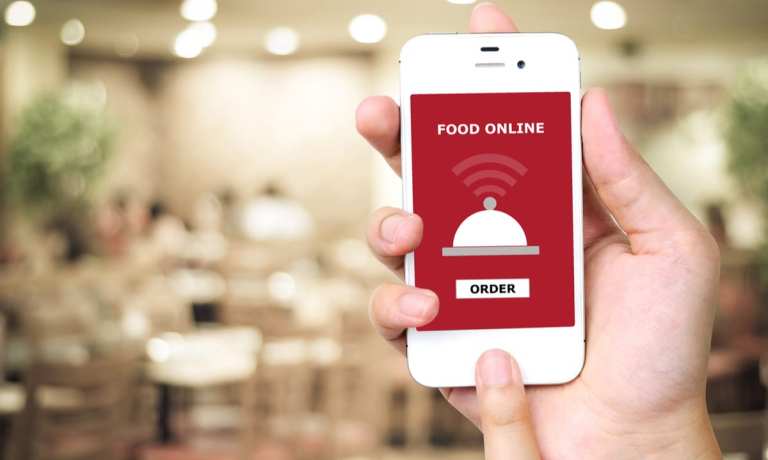
As restaurants big and small look to optimize their off-premises ordering options for consumers who have grown used to immediacy and convenience, mobile ordering options have grown more important than ever before. In fact, PYMNTS research finds that 92 percent of top performing restaurants offer the ability to order using a mobile app, compared to only 31 percent of the lowest performing restaurants. Additionally, this month’s Order To Eat Tracker® notes that 56 percent of restaurants that offer mobile order-ahead options have seen their revenues increase since the start of the pandemic.
Now, as mobile ordering becomes the norm, and consumers come to expect increasingly seamless ordering journeys, the question is not just whether a restaurant allows consumers to order via their mobile devices, but how it does this. Michigan-based pizza chain Jet’s Pizza, for one, has partnered with fellow Michigander OrdrAi to create what the company describes as an “industry first ‘text-to-order’ technology driven by an artificial intelligence engine,” incentivizing consumers to adopt the ordering channel with a 20 percent off deal.
“I think that … because our mobile devices have become extensions of us, that technologies that can ‘think like a human’ actually allow us to be more human,” Jet’s Pizza Chief Information Officer Aaron Nilsson told PYMNTS in an interview. “We spent the last 25 years of eCommerce figuring out websites and apps, and the tables are turning and now they are figuring us out and will be making it easier to order (or do anything).”
The Importance Of Intelligent Ordering
So far, consumers have been responding very positively to this SMS ordering feature, finding it simple and intuitive to use.
“The most common thing we hear is how easy and fast it is, said Nilsson. “It is personally the only way I order at my house. It was the first eCommerce order my 9-year-old daughter ever placed, and it’s how my mom orders, because everyone is comfortable with text.”
As of right now, the feature’s artificial intelligence (AI) is fulfilling orders with 95 percent accuracy. Nilsson noted, “You can’t please everyone all the time, but we are seeing a lot of smiles around this technology.”
He predicts that, “beneficially or scarily depending on how much you like technology,” AI will only continue to get better at interacting with humans, saying that these sorts of AI engines “seem to be trending in a way that will forever impact the landscape of mobile ordering.” In the next few years, he believes that “voice, text, or anything predictive” will be a common part of the mobile ordering experience, and within five years, he expects that half of all “major brands” will have “some level of engagement in AI.”
Looking Toward The End Of The Pandemic
“I think COVID was (pardon the pun) a shot in the arm for technology infusion in restaurants, and mobile ordering will evolve because of it,” said Nilsson. He added that “the new normal” is likely to involve far restaurant-prepared meals eaten at home.
“I know we might all be sick of it in the moment,” he said, “but I bet the trend will be a lower percentage of meals prepared at home, but not a higher percentage of meals eaten out.”
Additionally, he believes that consumers will be using restaurants’ apps for more than just placing takeout and delivery orders. We will also see “more ordering from the parking lot before people come into restaurants,” and consumers will also be selecting tables in-app in advance and checking restaurants’ crowdedness before arriving. The Jet’s Pizza app currently includes mobile ordering, a GPS-enabled store locator, and information about the chain’s locations.
The Technologies Of The Industry’s Future
In addition to AI-powered mobile ordering, Nilsson also believes that third-party restaurant aggregators will be central to restaurant technology going forward. While these aggregators are at best controversial, with many restaurants struggling to afford the steep fees they charge and with others even casting doubt on the viability of their business model, Nilsson has a more favorable view of these services. He believes that they offer necessary advantages to restaurants looking to meet consumers’ evolving needs without making potentially prohibitive investments in staff and infrastructure.
“You can now get practically anything delivered in 30 minutes: pizza, medicine, clothing, practically anything depending on your location,” he said. “And people aren’t trying to re-create the wheel … because they don’t need to. They can trust the ecosystems that have been set up.”
He also believes that much of the restaurant industry underestimates the importance of robotics. He pointed to the automobile industry as an example of how we underestimate the technology, saying “20 years ago people thought of robots as just helping with simple tasks and seemed to think that a robot could never build an entire automobile.” Now, he says, “Restaurant operators who aren’t thinking ahead sound like those people.”